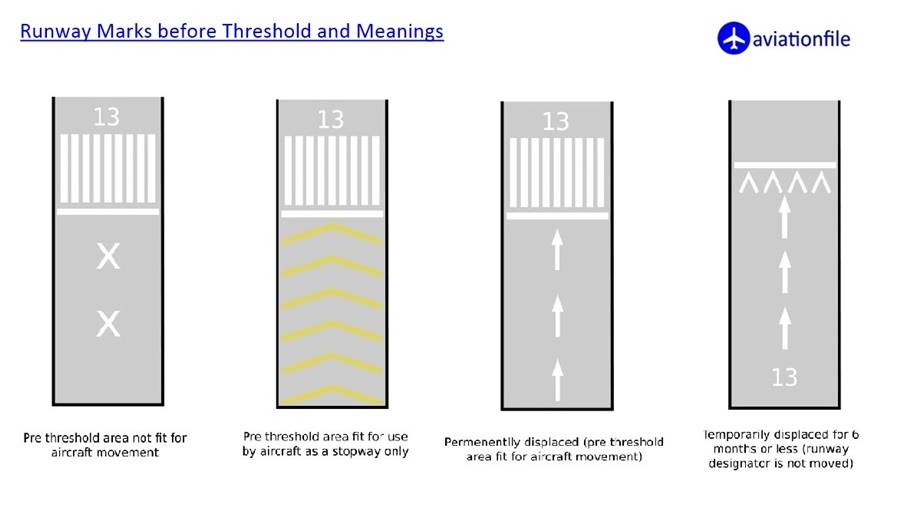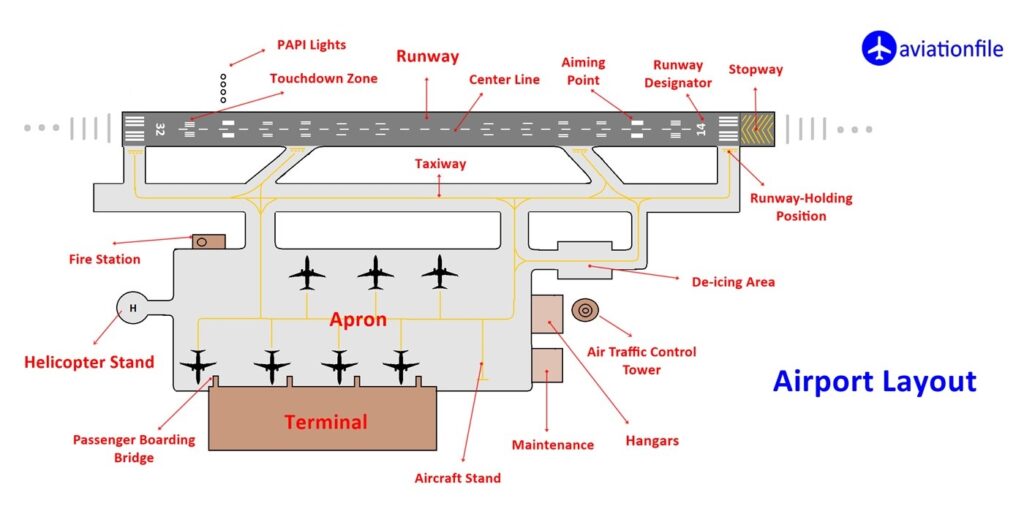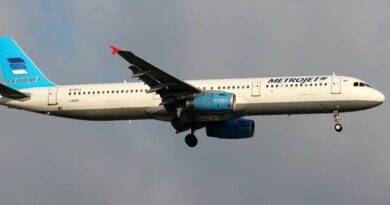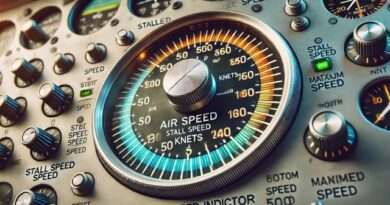What is Runway Displaced Threshold
A displaced threshold is a runway threshold located at a point other than the physical beginning or end of the runway. The portion of the runway behind a displaced threshold may be used for takeoff in either direction and landings from the opposite direction.
Displaced thresholds are used for a variety of reasons, including:
- To shorten the runway available for landings in order to protect an object or area off the end of the runway, such as a taxiway, a runway safety area, or a populated area.
- To protect the runway surface from excessive wear and tear, such as from the repeated impact of landing aircraft.
- To mitigate noise pollution from aircraft landings.
Displaced thresholds are marked with a white line across the runway, with white arrows leading up to it. Pilots must be aware of the location of displaced thresholds and must not land before the displaced threshold.

Here are some of the important things to know about displaced thresholds:
- The portion of the runway behind the displaced threshold is not available for landings in the direction of the displaced threshold.
- The displaced threshold is not a physical barrier, so aircraft can still cross it. However, pilots should avoid crossing the displaced threshold unless it is necessary to do so.
- Pilots must be aware of the displaced threshold when planning their approach. They should not land before the displaced threshold, even if they have enough runway remaining to do so.
- Displaced thresholds are marked on approach charts and in airport charts. Pilots should familiarize themselves with the location of displaced thresholds before flying into an airport.

Types of Displaced Thresholds: Temporary vs. Permanent
Displaced thresholds can be classified into two main types: temporary and permanent.
- Temporary Displaced Thresholds are often used when runways undergo maintenance, construction, or repairs. In these situations, the threshold is shifted temporarily to ensure safe landing and takeoff operations without disrupting airport functionality. Once work is complete, the threshold typically returns to its original position, restoring full runway length for landings.
- Permanent Displaced Thresholds are implemented to address longer-term considerations, like terrain obstacles, nearby residential areas, or environmental impact regulations. This permanent shift in the threshold allows aircraft to approach further down the runway, enhancing safety and reducing noise in surrounding areas.
References and Further Reading
- Federal Aviation Administration (FAA):
- Aeronautical Information Manual (AIM) PCG D-3: https://www.faa.gov/air_traffic/flight_info/aeronav/digital_products/dtpp/search/
- 5640.5A – Airport Marking and Lighting: https://www.faa.gov/airports/resources/advisory_circulars/index.cfm/go/document.current/documentnumber/150_5340-1
- International Civil Aviation Organization (ICAO):
- Annex 14 – Aerodromes: https://www.icao.int/APAC/Meetings/2015%20WAWG1/an14_1ed_1951.pdf
- Doc 9157 – Aerodrome Design Manual: https://store.icao.int/en/aerodrome-design-manual-runways-doc-9157-part-1
Further reading: https://www.aviationfile.com/what-is-turn-pad-on-runways/


